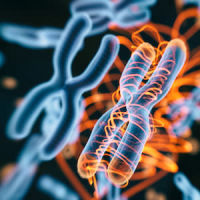Researchers from the Centre for the Clinical Application of Particles (CCAP)[i] recently presented results from a study on “An interdisciplinary collaboration transforming personalised, precision, particle-beam therapy of the future.” This study includes the LhARA project that is currently in the Research and Development phase. Cancer is the second leading cause of death worldwide, according to the WHO, which means that large numbers of people will receive radiation worldwide. New methodologies will enhance the patient’s treatment and experience.
Although, external-beam radiotherapy (RT), using photons, is mostly used, it appears that particle-beam therapy (PBT), using proton and ion beams, is increasingly gaining ground. A significant reason is that dose is conformed exactly to the tumour, as the bulk of the beam energy is deposited in the Bragg peak. Consequently, healthy tissue and organs at risk are not affected. The beam characteristics are limited to low dose rates (<10 Gy/min), a small number of temporal schemes and spatial distributions.
The dose delivered determines the clinical efficacy, thus minimising damage to healthy tissue.
Research on the use of novel beams with different characteristics has shown evidence of enhanced therapeutic benefit. These include therapy using very high dose per fraction, very high dose rate (> 40 Gy/s, "FLASH") and “mini-beam” (MBRT). Laser driven proton and heavy ion sources are cost-effective, flexible and compact.
Together with a greater understanding of tailor-made medicine for individual tumours, clinicians are ready for a radical transformation of PBT, according to Dr Ruth McLauchlan, visiting professor at Imperial College London.
One such example is the "Laser-hybrid Accelerator for Radiobiological Applications" (LhARA),
a hybrid accelerator that could combine established technique with the features of a laser accelerator. It would be able to deliver much higher dose rates of radiation than any other approach currently available, and would be capable of delivering high doses of radiation to multiple labs at the same time, allowing multiple experiments to be performed in parallel.
What can LhARA do?
• It combines different ion species in a single treatment fraction, using ultra-high dose rates and novel temporal-, spatial- and spectral-fractionation schemes.
• The best treatments possible will be available to many patients. Every individual patient will receive medication dose tailored to their specific need, in real time thanks to the integration of patient, soft-tissue, and dose-deposition imaging with real-time treatment planning in an automatic system.
Moreover, this system will reduce capital cost and increase patient throughput as the patient will spend less time in treatment. The LhARA consortium is currently completing research and developing a five-year R&D programme to deliver the technical design for building the plant.
Source: https://www.imperial.ac.uk/clinical-application-of-particles
Image credit: iStock
[i] The Centre for the Clinical Application of Particles is an interdisciplinary collaboration of staff from the Faculty of Medicine, the Imperial Academic Health Science Centre, the Imperial College NHS Healthcare Trust, the Department of Physics, the Imperial CRUK Cancer Centre, the Institute of Cancer Research, the John Adams Institute and the Oxford Institute for Radiation Oncology



























